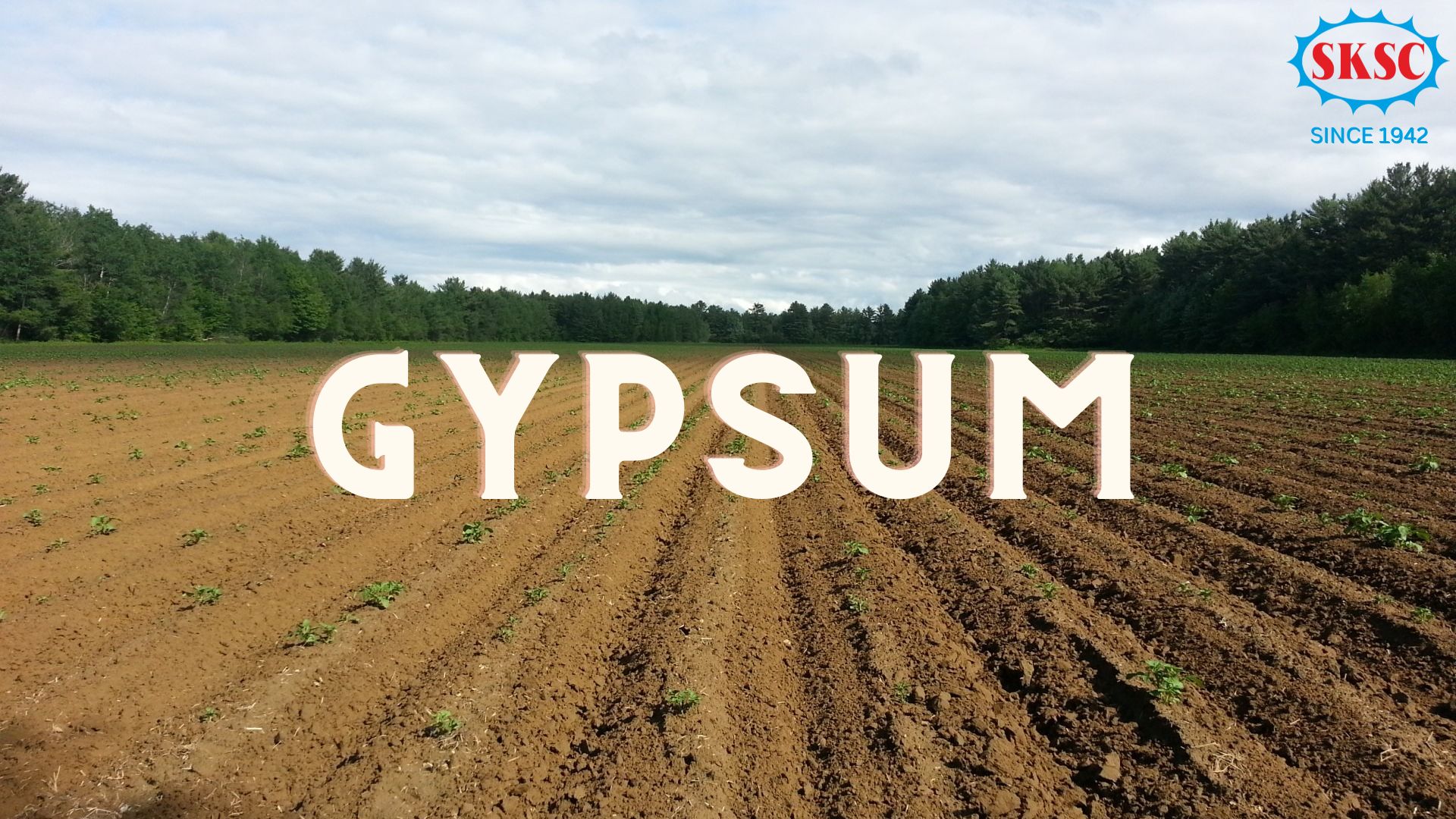
Gypsum, The soft sulfate mineral
Gypsum is made of calcium sulfate, CaSO4. Refined anhydrite (water-free) gypsum contains 29.4% calcium (Ca), 23.3% S (Plaster of Paris), and 23.3% other impurities. Gypsum fertilizer grades are around 22% Ca and 17% S. Gympsum is relatively insoluble (this is why wallboard softens but does not dissolve immediately when wet, at least when only slightly damp). It is a neutral salt of a powerful acid and strong base, and does not raise or lower acidity. When dissolved in water or soil, it undergoes the following reaction: Ca2+ + SO2+ = 2H2O It does not add or remove hydrogen ions (H). The Ca2+ ions react with exchange sites in the soil water, and the sulfate ions remain dissolved in the soil water.
Fertilizing agents substituted with gypsum:
As a fertilizer product, gypsum provides crop-available form calcium (Ca2+, SO42-). If the soil is deficient in these forms, then crop productivity benefits from the application of gypsum. However, this is a big “if” for Iowa soils. There is no evidence of deficiency of Ca in research, and typically any potential problems with low Ca levels are addressed by the application of calcium (CaCO3) limestone. Acidity problems usually occur prior to a deficiency of Ca. Therefore, liming effectively addresses the deficiency of Ca as well. Table 1 shows typical exchangeable Ca values for several Iowa soils. These values are very high. For calcareous soils containing free lime, the soil system saturates with Ca, and the supply of Ca and soil pH are controlled by the use of free lime. As for S, it is basically the same. Field trials conducted for over 35 years in Iowa have shown isolated and very small yield responses to S fertilization of corn or soybeans (2 positive and 1 negative response). Table 2 shows results from recent S trials (2000 and 2001) on corn and soybeans conducted in six sites across Iowa These results are consistent with research that has been conducted over many years where there was no increase in yield for the S, the gypsum or the Ca application. Therefore, if the application of fertilizer of either Ca or S is not necessary, then the application of gypsum for fertilization purposes is not necessary.
Gypsum as soil amendment:
Soil structure is affected by exchangeable ions, which are positively charged. Multivalent cations, on the other hand, help to hold soil particles together, as they can have electromagnetic attraction between two (or more) negative charge sites. Examples of multivalent cations include ca2+, mg2+, zn2+, and al3+. On the other hand, monovalent cations, which are negatively charged, cannot contribute to soil structure because they have only one positive charge. For example, sodium (Na+) can degrade soil structure by occupying large amounts of the soil exchange sites, which are also affected by large ionic sizes of Na. Soils with low salt, but high (Na+) levels have poor soil structure, including soils with high pH. Excess Na is not an issue on Iowa soils, with the exception of a very small area of Napa soil along the Missouri River valley. Gypsum may be used for reclamation in arid areas where salt and Na accumulate. Gypsum adds large amounts of calcium ions that push Na+ ions out of the exchange sites. When washed with clean water, both salt and Na are flushed out of the soil (this is why we use gypsum instead of limestone in these sites because it is more soluble and doesn’t increase soil pH). Even in these sites, this practice doesn’t work if the subsoil has low water permeability. If the soil has only high soluble salt then we don’t use gypsum because it adds salt to the problem. Soil Structure Improves Soil organic material helps “glue” soil particles together, and Iowa soils have very high levels of organic matter. Organic matter plays a similar role in good soil structure to exchangeable mixtures of cations. Physical Impact on Surface Soil Structure The biggest threat to surface soil structure is the physical impact from raindrops. The best defense is surface residue. This is provided at no cost by crop residue. Therefore, the best way to improve water infiltration is to limit tillage so that the crop residue is as large as possible.
Summary:
To sum up, Gypsum is a great source of both Ca and S fertilizer. If you need to apply those plant-essential nutrients, then yes, it works well. But for Iowa soils, both Ca and S are sufficient. Iowa soils naturally have the ability to provide sufficient exchangeable levels of Ca and S for growing crops.
S.K.S.C.NADARAJAN & BROR.
Salt company since 1942
Tuticorin Salt | crystal salt | crushed salt | relish freeflow salt | fine salt | coarse salt | size salt | Salt supplier | Kerala salt supplier | South indian salt export | South India salt company | thoothukudi saltern | Tuticorin saltern | deicing salt exporter | deicing salt tuticorin | Thoothukudi salt exporter | Thoothukudi traditional salt | Sea salt tuticorin | Sea salt Thoothukudi | Thoothukudi salt | salt exporter tuticorin | salt Thoothukudi | SKSC salt | India old salt company | Salt company India | Salt company tamil nadu | Salt company Tuticorin | Tamil nadu Salt | India Salt | powder salt | natural salt india
